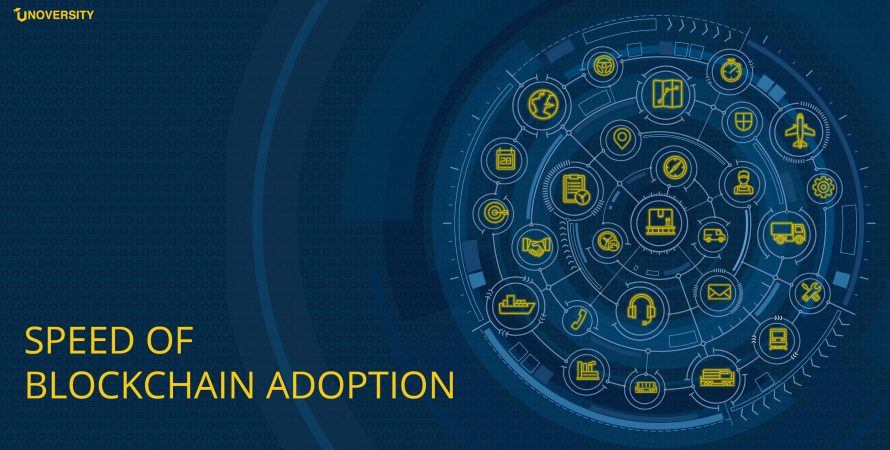Blockchain is the big thing right now, and every tech giant wants to dip their toe in the pond of the decentralized distributed ledger.
Companies like JP Morgan and IBM have already developed enterprise-targeted Blockchain platforms, Quorum, and Hyperledger Fabric respectively. There is also Ethereum which is a public Blockchain and a development platform.
Scalability: Currently this is the biggest threat that Blockchain technologies face. For instance, Bitcoin Blockchain is just 160 GB and it is already slow enough that a transaction takes anywhere from 3 days to weeks to get confirmed.
Throughput: This is attached to the issue of scalability. The write speed on existing blockchain technologies is very slow. Bitcoin blockchain supports 1–3 tps whereas Visa supports 2000–10000 tps.
Latency: If Blockchain technologies have to carve a place in Fintech then they will have to improve the latency. One Block on Bitcoin blockchain needs 10 mins to process. In contrast, a Visa transaction gets confirmed in seconds.
There are solutions already coming up to solve these problems. There is BigchainDB, IOTA Tangle, and many others. Even Hyperledger Fabric is much faster than Bitcoin blockchain.
The real question that needs to be asked is, how much resistance would Blockchain based technologies face from the Tech giants because it can potentially disrupt how Facebook and Google choose to sell our data and how a company like Netflix or Amazon Video serve us our content.
The additional challenges revolve around ease of use.
Right now, if I want to send you 0.01 ETH, I have to:
Go to the MyEtherWallet website
Triple check it’s the correct one, and not a phishing site
Upload a file, enter a long string of letters and numbers, or a sequence of unrelated words
Enter your unique address, which is yet another string of numbers and letters
Set not just the amount, but also the maximum gas I’m willing to send with the transaction, including the price I’m willing to pay for it
Triple confirm that I want to send the transaction
Watch it and wait to see if it goes through
That’s way too many, way too complicated steps
Ease Of Setup: The internet may be everywhere, but whoever’s wifi you hop onto, they had to set it up first. Luckily, it’s only plugging in a few cables and turning on a box. Or calling a guy.
Blockchain applications need the same plug-and-play infrastructure in order for the many ideas we have for using them to come to life.
Right now, you need a dedicated team of seasoned developers to potentially even learn new programming languages, then crank out a custom-coded solution. There’s no tap-here-to-start-tutorial and no software development kit, but eventually, there will be. Several projects are already working on this.
The only way blockchain innovation can reach critical velocity is if the barrier of entry is low enough for enough people to take a swing at their ideas.
Speed: Much like downloading a video in 1998 would’ve taken me days, transferring tokens via a blockchain isn’t exactly fast these days. With standard speeds of 1–5 transactions per second (TPS), current major blockchains like Bitcoin and Ethereum have a long way to go. Confirmations can also take anywhere from seconds to hours to show up.
While there are many alternative projects concerned with the issue of scaling have already launched development, most of their claims regarding thousands, hundreds of thousands, or even millions of transactions per second fall utterly short in real-world conditions.
Old, but well-established companies, like Visa, easily handle several thousand TPS, with peak capacity going up to 24,000 and more.
Since blockchains rely on the internet to function, chances are we’ll see the same seesaw we had with the early web for a while: lots of people log on, sites crash, infrastructure is upgraded, retested, and so on and so forth.
Give It Time: Blockchain is in its nascent stage right now. It is a mere ten years old, so it’s going to suck for a while. That’s only a problem of perception, however, because the truth is we’ve always used things that suck and we always currently are.
Cars sucked for a long time. So did planes. Game consoles, TV, printers, telephones, mobile phones, tablets, the internet, we stuck it out with all of these until they eventually caught up.
It is only in hindsight that it feels like we one day turned around and everything was amazing, easy, and fast. But then find the next thing that’s slow and clunky. Right now, that thing is blockchain. And whether you complain along the way or not, you’ll do what you always do: give it time until it gets there.





10 Ways Schools Can Offer Education On Crypto Currency